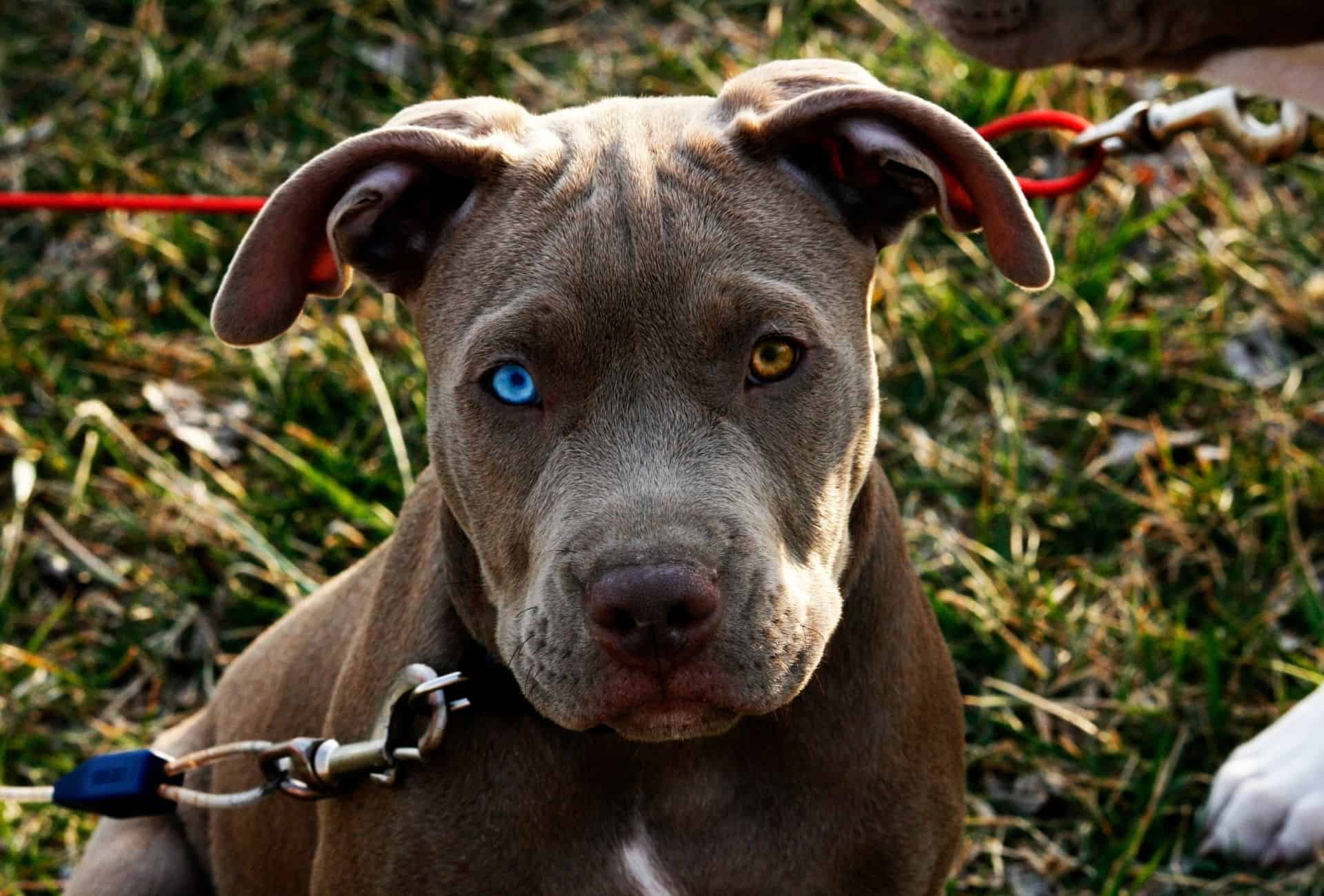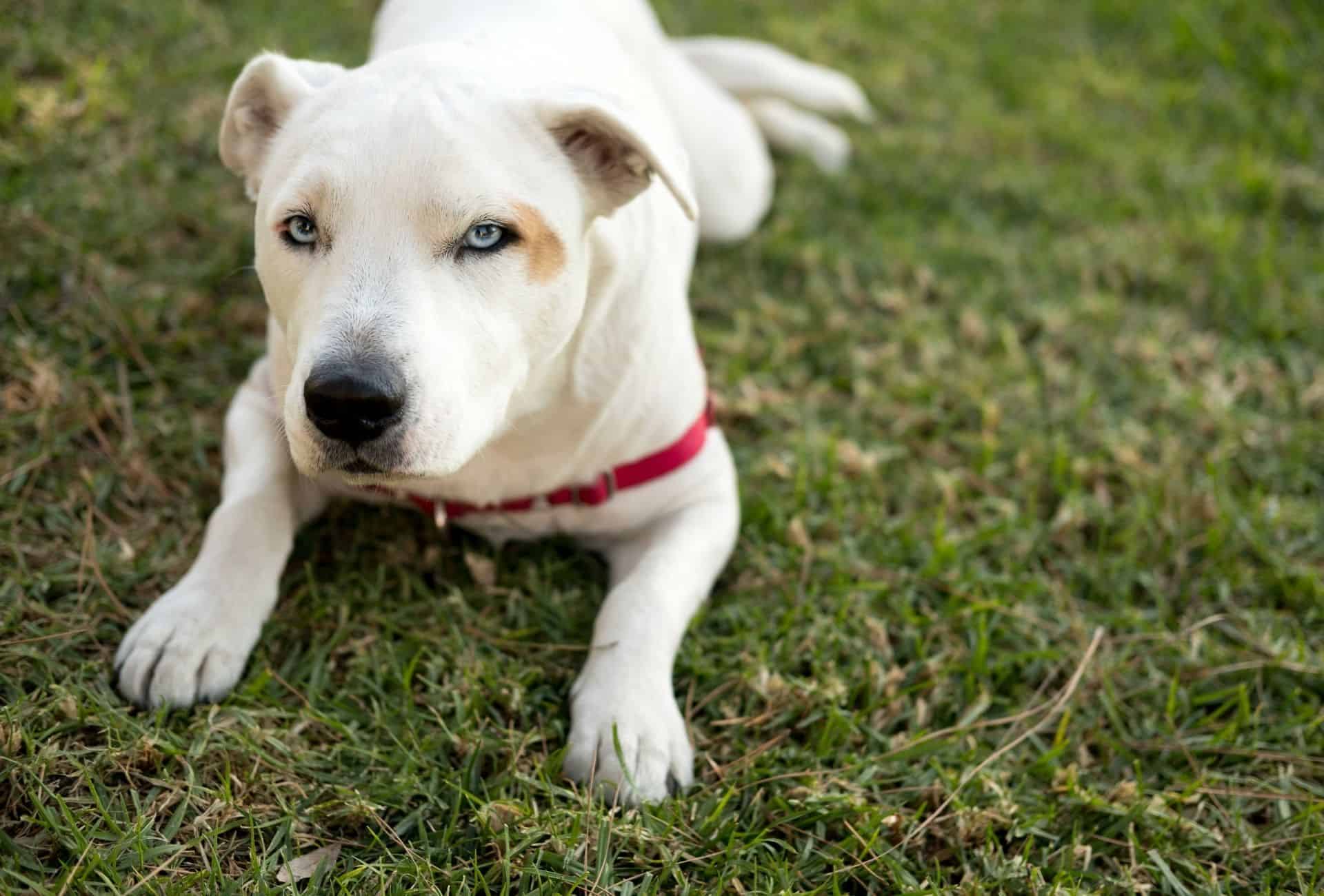This page contains affiliate links. We may earn money or products from the companies mentioned in this post through our independently chosen links, which earn us a commission. Learn More
The Blue Nose Pitbull is purebred American Pitbull Terrier, but it’s categorized by its nose color being blue. The Blue Pit is no different from other pit bulls, and it’s becoming popular among breeders, but it’s still rare to find. A Blue Nose Pitbull puppy can cost around $1,000 to $3,000.
The American Kennel Club has yet to recognize it. Nevertheless, pitbull non-enthusiasts balk at the idea of more Pitbulls roaming the world.
The myth, muck, and lore surrounding the Blue Nose Pitbull, and pitbulls in general, is difficult to wade through on your own. Let this comprehensive article be your guide in your quest to uncover the truth about the notorious Blue Nose Pitbull. Here are 9 things you should “nose” about the Blue Nose Pitbull:
Can A Pit Bull Have Blue Eyes?
Yes, pit bull breed dogs can have blue eyes, but usually only as puppies.
Some may keep those baby blues into adulthood, but that is rare.
Just like people are born with blue eyes, but they darken, the same applies to dogs.
Color, like everything, is determined by the genetic makeup and developed by the amount of melanin production in your dog.
Melanin is a natural skin pigment that determines how light or dark your skin, hair and eyes are.
Less melanin production leads to lighter blue eyes, pale skin or blonde hair.
A complete lack of pigmentation is called Albinism.
In dogs, this low production of melanin can cause a white coat, blue eyes or a pink nose.
Melanin production only starts a few weeks after birth and slowly increases with age.
That’s why most puppies are born with bright blue eyes and a lighter coat.
The coat color oftentimes influences the eye, nail and nose color.
My Rottweiler, for example, has so much melanin in her fur that blue eyes would be nearly impossible.
How Long Do Pitbull Puppy Eyes Stay Blue?
You may get a first glimpse at your Pitbull’s adult eye color around the age of 4 months.
Their puppy coat will be replaced by a much thicker and darker adult coat when they are 6 months old.
Blue-eyed Pitbull puppies are not rare and their eye color will most likely change over time.
So don’t choose the one bright-eyed Pitbull in the litter just because of his appearance.
Even if a breeder sells them as “rarity” for a premium, the color will almost certainly vanish (if it’s a purebred, more on that below).
That being said, while blue eyes are not particularly rare for Pitbull puppies, not every pup has blue eyes.
Check out my Cane Corso colors article for more information on how breeders try to falsely label colors.
Breeding for a specific color or coat type should always be a red flag when choosing a responsible breeder.
When specific looks are the primary breeding factor, other traits like temperament or health are disregarded.
You might find that the prettiest dog in a litter will have lots of health issues behind the facade.
Always make sure that the parents have health certificates and the right behavioral traits you are looking for.
Check out my article on questions to ask your breeder to avoid falling prey to these “breeders”.

Inbreeding in dogs is another huge issue and will be used to pass a certain appearance on to future generations.
As you might imagine, inbreeding comes with the worst health concerns and should never be encouraged.
Merle describes a beautiful coat color pattern that can create odd-colored eyes. It’s commonly seen in these breeds:
The merle gene sadly comes with many health issues like deafness and blindness.
Double merles (MM) are extremely prone to these genetic diseases and therefore merles should never be bred together.
Heterozygous merles (Mm) are way healthier and resemble the merle pattern best.
A Pit Bull with a merle coat pattern is excluded from the APBT breed standard and might not be purebred because the gene must have somehow found its way into the bloodline.
Tyrosinase is an enzyme that controls the production of melanin.
Albino dogs are “tyrosinase-negative” meaning that their body is incapable of producing melanin.
Therefore, these dogs will be born with a unique white coat, blue eyes and a pink nose.
Albinism in dogs is an extremely rare mutation and both parents need to carry the recessive gene.
Be very cautious when a breeder is trying to sell you a rare white pitbull.
Albinism comes with many health issues, including deafness or skin cancer.
Due to their pale coat, they must be protected from direct sunlight at all times using either bodysuits or sunscreen.

White patches around the eyes or nose can occur due to a lack of pigmentation.
Pit Bulls or any other breed with dominant white coats can develop light eyes or a pinkish nose.
#7 It’s Gettin’ Hot In Here …
Because pitbulls love to play, they sweat A LOT! Frequent bathtimes are a must, especially if your Pitbull lives indoors. And unless you live in a temperate climate, they should live indoors.
They do not have a thick, protective coat, so they become cold easily. In general, pitbulls have a tough time regulating body temperature.
So do your Blue Nose Pitbull a favor and keep him in the air conditioning–except when it’s time to go outside and play–and then give him a bath!
FAQ
How much is a GREY pitbull with blue eyes?
How rare is a pitbull with blue eyes?
What breed of dog is GREY with blue eyes?
The Grey APBT, also known as the American Grey Pitbull and American Pitbull Terrier Grey, is the most notorious Pitbull breed. The AKC does not recognize these dogs, and many countries forbid owning Grey American Pitbull Terrier puppies.